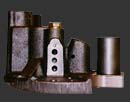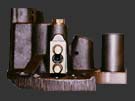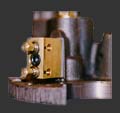

Once upon a time...
We were told that to repair a damaged recloser all we had to do was replace the burned and broken parts and the precision timing of the recloser was restored to it's original calibration. This fairytale was repeated in word and action so many times that every engineer in my generation accepts this as fact. Prior to the availability of fault current testers, we had little choice.
But it just doesn't happen!
When manufacturing a new recloser does the manufacturer simply assemble all new parts and automatically achieve an accurate TCC and Operations Sequence without a testing and calibration procedure? NO!
Then why would you expect a repaired recloser with a mixture of new and old parts to achieve an accurate TCC and Operations Sequence without a testing and calibration procedure?
How can we assume that each repaired recloser wiol operate to an accuracy of + 10% of it's standard Time Current Curve?

Simple!
Following the completion of each recloser repair, we remove the Fixed Orifice Plate shown in View #1 from it's location on the Solenoid Frame Assembly shown in View #2 and install our Adjustable TCC Valve Block shown in Views #3 and #4.

Now the recloser may be calibrated as the test technician adjusts the two tapered screw valves during fault current testing. The fault current tests are conducted at approximately 4X coil size to set the Low Screw and repeated at 10X to set the High Screw.

How convenient! A simple package of two adjustable orifices provides a permanent selection of all available Time Current Curves assuring you that the recloser may always be calibrated to an accuracy of + or - 10% following the repair process.

Another myth regarding recloser TCC's is that during repair it is a simple matter to convert a recloser manufactured originally as a 'B' to a 'C' or 'D' TCC. The original manufacturing process calibrated that recloser on the 'B' TCC. Rotating the Fixed Orifice Plate to another TCC selection eliminates all calibration and only approximates the selected TCC. You will experience additional coordination errors mixing new reclosers manufactured as 'C' or 'D' TCC with uncalibrated reclosers converted from 'B' to 'C' or 'D' TCC.
Are you experiencing poor customer service and high operating costs because your coordination scheme is based on fairytales and myths? Our recloser maintenance service assures you that not only new but also the repaired reclosers will perform as specified by the Time Current Curve.